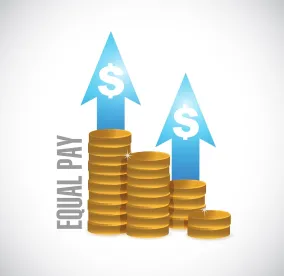In the United Kingdom, gender diversity and equal pay have been hitting the headlines. Halfway through the UK's first gender pay reporting year and with less than six months to go until the deadline for publication of statistics, how many employers have reported and what trends are we seeing?
By April 4, 2018, employers in Great Britain with 250 or more employees must publish the following statistics on their own websites and on the government’s designated website:
-
Gender pay gap (mean and median averages between men’s and women’s hourly pay)
-
Gender bonus gap (mean and median averages between bonus pay awarded to men and women)
-
Proportion of men and women receiving bonuses
-
Proportion of men and women in each quartile of the employer’s pay structure
Employers will be expected to publish this information annually, in compliance with The Equality Act 2010 (Gender Pay Gap Information) Regulations 2017 (the “Regulations”). The task of managing the reporting process, and the accuracy of the information published, falls upon senior management, with a director or other “appropriate person” required to sign off on the information and confirm its accuracy.
While there are no formal sanctions for noncompliance under the Regulations, employers who fail to publish their statistics by the deadline are likely to be named and shamed. The guidance to the Regulations also suggests that the Equality and Human Rights Commission may take enforcement action in the case of a complete failure to report. Employers should be aware that there is a risk that their gender pay statistics, particularly in relation to bonus pay, may be used as the basis for sex discrimination and equal pay claims, and therefore pay structures and any discrepancies should be given careful consideration. It is also an opportunity for employers to tell their story—justifying a bigger gap where necessary, but demonstrating the positive measures a company is putting in place to address the issue and strive for improvement.
Six Months In—What Do the Reports Look Like?
So far, less than 1% of in-scope companies have published their gender pay gap statistics. Those who have done so range from local authorities to large employers such as Deloitte, SSE, Virgin Money, TSB, and Weetabix.
Notably, while it is not mandatory to produce a narrative alongside the statistics, the majority of employers who have reported so far have chosen to do so. However, the approach taken to the accompanying narrative differs significantly. Many employers have focused on limiting the legal risk arising from their statistics, while others have used the narrative as a public relations (PR) and recruitment tool.
In order to minimize the risk of claims arising in connection with their gender pay statistics, employers have tended to spell out the fact that the gender pay gap is a direct result of a higher concentration of men in senior roles and women in lower-paid roles, as opposed to discriminatory pay policies. The publication of gender pay statistics has presented employers with the opportunity to consider their talent pipeline, review how many women are entering the business and at what levels, and give thought to how these women can be retained and progress to senior management. Setting out in the narrative any programs and initiatives put in place to address imbalances can be an effective way to demonstrate that the organization is taking the issue seriously and making genuine efforts to improve.
By way of illustration, Doncaster Metropolitan Borough Council has published a detailed narrative that highlights the cases of particularly successful female employees in the organization. It also conducted a “deep dive” audit of the workforce demographics. By calculating a proportional pay gap, taking account of the workforce composition, the council was able to show that across all grades there is no significant gender pay gap (overall pay gap was 0.44%). Contrast this with the headline average pay gap figure of 15.7% reported as part of the mandatory statistics. Likewise, TSB was able to use the narrative to explain that its 31% pay gap is a direct result of the makeup of its workforce, which has a higher percentage of men in senior roles. The narrative notes that if senior management were split 50/50, the pay gap would be reduced to 1%. Secondly, because 95% of the senior managers who choose to work reduced hours are women, their bonus pay is prorated, which affects the mean bonus gap. TSB then goes further by setting out the various gender equality initiatives it promotes.
In addition, it is important to view an employer’s gender pay statistics in the context of each sector. For example, within the financial services sector, the gender pay gap is estimated to be 39.5%, which is significantly higher than the national average of 18%. A financial services employer with a gender pay gap in the region of 20% is therefore doing relatively well in comparison to the rest of the sector, so this would be a fact that the employer could highlight.
Employers will ultimately have to decide whether they will take a PR and recruitment–focused approach or a strict legal risk approach. Employers opting for the former may produce a more detailed narrative, drilling down into the statistics to find the positive points worth sharing. For global entities, their past experience of reporting in other countries will also inform their strategy.
What Should Employers Be Doing Now?
With less than six months to go, employers who have not yet reported should begin prioritizing their gender pay reporting obligations. While those with high gender pay gaps may fear the reputational risk involved in disclosing those figures, it is important to keep in mind that the existence of a pay gap does not of itself prove unlawful pay discrimination. Employers should consider the use of a narrative alongside the figures as it may be useful in explaining issues that give rise to the gender pay gap. The narrative can also be an opportunity to promote the company’s positive initiatives such as inclusive recruitment policies, training for hiring managers, flexible working schemes, diversity steering groups, and mentoring initiatives.
While compiling gender pay statistics, it may be prudent to review pay policies with a view toward striving to achieve pay equality and increasing workplace transparency around pay structures, including using performance review processes to be clear to employees about the basis for pay awards.
As the April 4, 2018 deadline looms, with several thousand companies still to report, it is clear that there remains much to be done, both in ensuring compliance with the Regulations and in achieving the long-term goal of pay equality in the workplace. However, the conversation has started and many companies are already reporting significantly higher levels of engagement on the issue within senior management and the C-suite. This is an important and positive step in the right direction.





 />i
/>i

